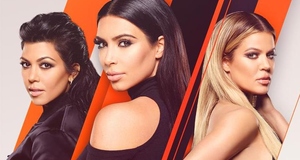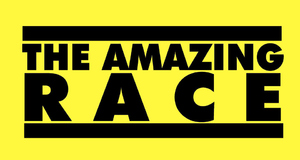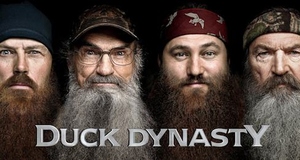Good Girls Gone Bad: Race and Gender in Oxygen's The Bad Girls Club
By
2012, Vol. 4 No. 07 | pg. 3/3 | « Race: Minorities as the MajorityAs the format of BGC has evolved, so has the racial makeup of each season’s successive cast. In season one, only a total of two black women are originally cast (Ty and Leslie) on the show. African American cast member Andrea Laing only appears later as a replacement “bad girl” for Ty, who is removed for fist fighting with Aimee. However, the most racially diverse seasons (four and seven) of the show, in particular, are remembered by audiences, fans and produced two of the highest rated and most watched single episodes and seasons of all shows on Oxygen.27 In season four, three of the seven cast members are black (Natalie Nunn, Kendra James and Portia Beaman) and one identifies as Albanian (Florina “Flo” Kaja). Only three white women (Amber McWha, Katherine “Kate” Squillace and replacement Lexie Woltz) represent three out of eight women appearing on the show. In season seven, there are two black women (Tiara Hodge and Nastasia “Stasi” Townsend), two Puerto Rican women (Priscilla Mennella and Angelic “Angie” Castillo) an Iranian (Tasha Malek) and a Creole woman (Judith “Judi Jai” Jackson) cast for the show. Only two white women (Shelly Hicks and replacement Cheyenne Evans) make up the remaining cast. These seasons also feature the most notorious cast members ever produced by the show who are enjoying fame in other aspects of entertainments, and had the most physical fights between women, but the least number of replacement “bad girls.” In total, 30 of the 62 cast members who appear on the seven aired seasons represent some racial minority group. BMP’s casting selection suggests that by increasingly casting more minority women, there will without a doubt be more violence, physical fights and drama. Boylorn (2008) and Hooks affirm this notion by arguing that images of black and minority women on television have been historically manipulated to leave a particular impression on audiences.28 Particularly, they note that black women tend to be typecast into historical categories of stereotypes, “ranging from the hypersexual Jezebel to the asexual Mammy.”29 Other stereotypes of black women include everything from “educated bitches” to bad Black mothers, while both black and minority women are connoted as sluts, divas, hoochies, weepers, waifs, whores, antagonizers, shrills, gold diggers, welfare queens, freaks and hot mommas.30These situated stereotypes of minorities on television, sitcoms and dramas reflect dominant representations of the majority viewers’ opinion as a tool of and under the guise of what James Lull notes as hegemony, or the power or dominance one social group holds over others.31 Lull also notes that “the controlling economic forces use mass media to provide a ‘rhetoric [through] which these [concepts] are labeled, evaluated and explained.” 32 In this sense, specifically white male director Jonathan Murray uses his power and influence as a well-known “reality television” agency and producer to reinforce minority women as “angry bitches.” Murray and BMP reinforce privilege and power as generally white males in that they literally and physically cast women for the show. These women he codes as “bad girls” are usually minority women cast to portray to the public that most “bad girls” are Black, Latina, Creole and/or other racial minorities who are violent and fame hungry. This over casting of minority women who fit media engineered and driven stereotypes in a show watched by mostly young girls and minorities condones such behavior by it being repeated over and over. Additionally, it creates a vicious cycle of more racially minority women to audition for the show in the hope of a “big break” or berth in the entertainment industry. Even when minority women are cast on shows and editing attempts to regard them in a somewhat positive light, dominant media portrayals still reign true. In season five, African American Catya “Cat” Washington, known as “The Elite Player” was cast because she represented the money hungry, gold digging stereotype. Specifically, in episode three “Where’s the Money Honey,” Cat attacks fellow roommate Erica Langston’s male interest when he fails to pay a $32 tab for drinks at a bar. “As ladies, we need to hold ourselves to higher standards. Erica step your game up. If you let someone walk all over you, they will,” Cat states during a confessional interview. 33 The confrontation turns physical when Erica invites Jeff back to the mansion and Cat confronts him. Rather than diffuse the situation, Cat’s intended foil Brandi Arceneaux “The Sneaky Stripper,” who is also an African American woman, encourages Cat to “spit in his face,” which she eventually does, in addition to dowsing Jeff in buckets of water until he leaves the house. Thus, the more crazy and outrageous, the more likely a chance minority women are cast on the show over white women. This move away from casts that feature more white women to casts almost entirely composed of minorities codes, specifically, minority women’s behavior as “bad,” while suggesting that white women are influenced by these minorities. This creates a white-black dichotomy that allows the dominant and hegemonic powers that be to suggest that the intimidating, “sistas with attitude” cast for the show ‘frighten’ their white counterparts. ConclusionOxygen’s The Bad Girls Club is a text book example of “reality television” blurring the portrayal of real life to its audiences. The show, like many other docudramas and reality experiments of its kind, under a “benign” purpose portrays stereotypical notions relating to gender and race as a marketing and entertainment scheme. However, BGC is guilty of proposing new gender stereotypes using old entertainment and marketing methodology. As the show grows in popularity and ratings, the over casting of racial minorities directly suggests that minority women, in general, exhibit the gamut of traditional stereotypes based on the types of women cast for the show. BGC’s destructive format also has larger implications. While the intent of the show is to help women who identify as “bad girls” grow and change their behavior, it has instead devolved into a program that portrays women as unusually violent and promiscuous. This, however, is not a new, developing “tool” used by reality television programming in its portrayal of femininity and women, but it rather brings to the surface an image of women that is not always noticed. A critical focus on Bunim-Murray Productions, Oxygen and NBC Universal continually demonstrates that Kellner’s cultural studies and multiperspectival approach allows us to dissect the unrealities behind the “camera lens” and misguided gaze of “reality television.” It is up to the public, communication scholars and media to produce and add to the scant amount of literature on shows such as The Bad Girls Club to defy stereotypical portrayals and extrapolate the racist and sexist formula that is integral to many of today’s “reality shows.” References“About the Bad Girls Club.” Bad Girls Club Creed. (2010). Oxygen.com. 6 Oct. 2010. Retrieved 9 Dec. 2011. http://bad-girls-club.oxygen.com/about-the-bad-girls-club. “About the Bad Girls Club.” (2011). Oxygen.com. Retrieved 10 Dec. 2011. http://bad-girls-club.oxygen.com/about-the-bad-girls-club Antony, M.G., Thomas, R.J. (2008). Tequila, Straight Up: Bisexuality, Reality Dating and the Discourse of Heteronormativity. Kaleidoscope: A Graduate Journal of Qualitative Communication Research, 7. 49-65. “Bad Girls Club 5 Miami Catya vs Jeff and Erica.” (2010). Posted by ‘BaddestGirls.’ YouTube. 24 Dec. 2010. YouTube.com. Retrieved 9 Dec. 2011. http://www.youtube.com/watch?v=Z_Mvo4xy52Y Biltereyst, D. (2004). “Media audiences and the game of controversy: On reality TV, moral panic and controversial media stories.” Journal of Media Practice, 5 (1). 7-24. Bobo, J. (1995). Black women as cultural readers. New York: Columbia University Press. Bogle, D. (1997). Toms, coons, mulattoes, mammies & bucks: An interpretive history of blacks in American films. New York: Continuum. Booth, W. (2004). “Reality is Only An Illusion, Writers Say – Hollywood Scribes Want a Cut of Not So-Unscripted Series.” The Washington Post. 4 Aug. 2004. WashingtonPost.com. 10 Dec. 2011. http://www.washingtonpost.com/wp-dyn/articles/A53032-2004Aug9.html. Brenner, Tara. (2005). A Quizzical Look Into the Need for Reality Television show Regulation. Cardozo Arts and Entertainment, 22. 873-901. Butsch, R. (2006). Review of the book Reality TV: Audiences and popular factual television. Journal of Communications, 56. 226-228. “Char casting Tape for BGC6.” BadGirlsClubVideoz. YouTube. 9 Jan. 2011. YouTube.com. Retrieved 9 Dec. 2011. http://www.youtube.com/watch?v=yMHb4PoCiVQ&feature=results_video&playnext=1&list=PLA08C5CE34C8D4CF7 Collins, P.H. (2000). Black feminist thought: Knowledge, conscious and the politics of empowerment. (2nd ed). New York: Routledge. Collins, P.H. (2004a). Fighting words: Black women and the search for justice. Minneapolis: University of Minnesota Press. Collins, P.H. (2004b). Black sexual politics: African Americans, gender, and the new racism. New York: Routledge. Cummings, D. (2002). Reality TV: How real is real. London: Holder and Stoughton. Dines, abd Humez (eds). (2003). Gender Race and Class in Media: A Text-Reader, 2nd Edition. Sage Publishers. Entman, R.M., Rojecki, A. (2000). The black image in the white mind: Media and race in America. Chicago: The University of Chicago Press. Fernandez, J. (2011). “Bad Girls or Bad Waste?” Pierre County Herald. 16 Apr. 2011. PierreCountyHerald.com. Retrieved 10 Dec. 2011. Hill, A. (2005). Reality TV: Audience and Popular Factual Television. Routledge. Hooks, B. (1992). Black looks: Race and representation. Boston: South End Press. Learmonth, N. (2007). “NBC U Sucks in Oxygen.” Daily Variety, p. 1. “Meet the BGC New Orleans Cast.” (2011). Oxygen.com. Retrieved 9 Dec. 2011. http://bad-girls-club.oxygen.com/bgc/photos/meet-the-bgc-new-orleans-cast Means, C. (2000). African American viewers and the black situation comedy: Situating racial humor. New York: Garland Publishing Co. Seidman, R. (2010). “More ratings highs for Oxygen’s ‘Bad Girls Club.’” TV By The Numbers. 18 Aug. 2010. TvBytheNumbers.com. Retrieved 9 Dec. 2011. http://tvbythenumbers.zap2it.com/2010/02/10/more-ratings-highs-for-oxygens-bad-girls-club/41693. Smith-Shomade, B.E. (2002). Shaded lives: African American women and television. New Brunswick, NJ: Rutgers University Press. Ventre, M. (2009). “Just how real are reality TV shows? Shows may exist in a middle ground— not fully scripted nor completely true.” MSNBC. 8 Apr. 2009. MSNBC.com. 10 Dec. 2011. http://today.msnbc.msn.com/id/30092600 Williams, J. (2009). “Ratings Success for Oxygen’s Bad Girls Club.” The Cheney Free Press. 18 Oct. 2009. CheneyFreePress.com. Retrieved 10 Dec. 2011. 1.) Butsch (2006) p. 226 2.) Hill, A (2005). 3.) Booth, W. (2004). 4.) Biltereyst (2004), 17 5.) Brenner, T. (2005), 876 6.) Brenner, T (2005), 876 7.) Booth, W. (2004). 8.) Booth, W. (2004). 9.) Ventre, M. (2009). 10.) Documentary style, competition/game shows, self-improvement/makeover, renovation, social experiment, dating shows, talk shows, hidden cameras, supernatural and paranormal, and hoaxes. 11.) Antony, Thomas (2008), p. 51 12.) Biltereyst, (2004). P. 11-12 13.) Kellner, D. in Dines, (2003), 11 14.) Kellner, D. (2003), p. 9, in Dines (2003). 15.) Kellner, D. (2003). P. 10 16.) Kellner, D. (2003). P.10 17.) Kellner, D. (2003), p. 11 18.) Kellner, D. In Dines (2003), 15. 19.) Kellner, 12-13 20.) Kellner, 14 21.) Kellner, 16-17 22.) Oxygen.com http://bad-girls-club.oxygen.com/about-the-bad-girls-club (2011) 23.) Fernandez, J. (2011). 24.) Williams, J. (2009). 25.) “About the ‘Bad Girls Club.’” (2010). Oxygen.com. http://bad-girls-club.oxygen.com/about-the-bad-girls-club. 26.) Learmonth (2007). 27.) Seidman, R. (2010). 28.) Means, Coleman (2000), Smith-Shomade (2002). 29.) Bobo (1995), Bogle (1997), Collins 2000, 2004b, Entman & Rojecki (2000). 30.) Collins (2004b) 31.) Lull, James “Hegemony” , p. 61 in Dines 32.) Lull p. 62 33.) “Bad Girls Club 5 Miami Catya vs Erica and Jeff.” (2010). http://www.youtube.com/watch?v=Z_Mvo4xy52Y Suggested Reading from Inquiries Journal
Inquiries Journal provides undergraduate and graduate students around the world a platform for the wide dissemination of academic work over a range of core disciplines. Representing the work of students from hundreds of institutions around the globe, Inquiries Journal's large database of academic articles is completely free. Learn more | Blog | Submit Latest in Business & Communications |
















